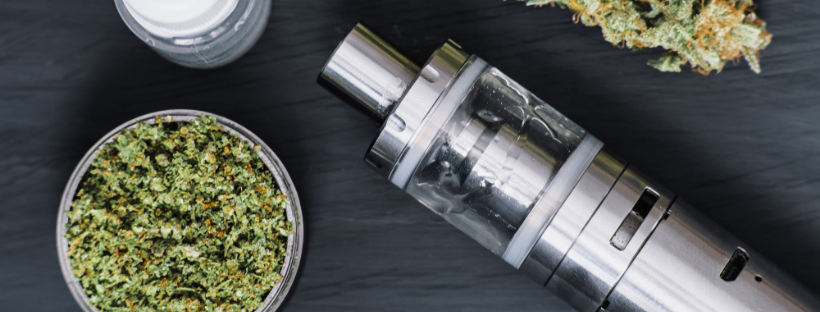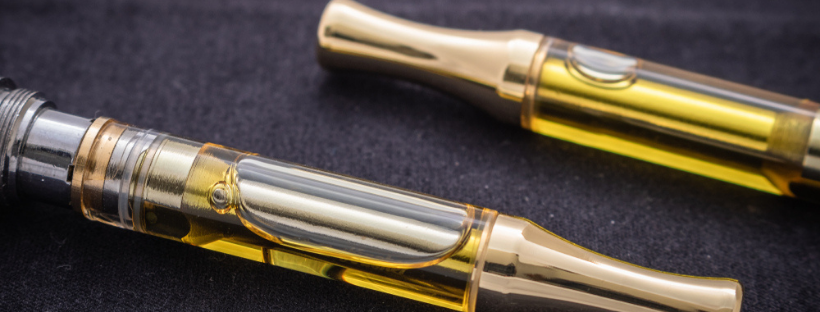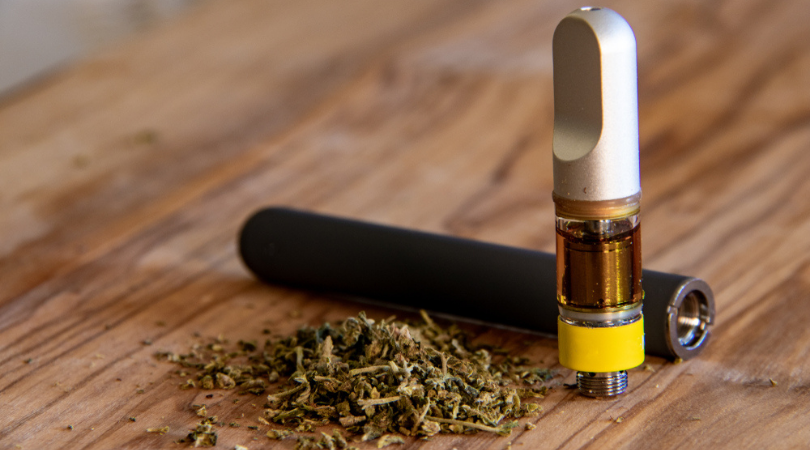Cannabis
How To Vape THC And CBD: The Ultimate Beginner’s Guide To Vaping
You’ve probably heard other smokers talking about it, and you’ve undoubtedly seen it referenced online and in conversation threads. Vaping. It’s a method of consuming your cannabis that is a relatively recent development when compared to other consumption methods.
While it can seem intensely complicated at first glance, particularly if you are newer to the cannabis space in general, there are some resources that will get you on the road to making an informed step into beginning to vape your THC and CBD. Luckily, you’re reading one of those resources right now.
Vaping can be approached simply and can mean getting more bang for your buck from a lot of various cannabis preparations. We’re going to give you all the information you need to decide what you want to vape, how you want to vape it, and how much you’re going to need.
What Is A Vaporizer?
Let’s make sure we give you all the background you need and talk a little bit about how a vaporizer physically functions. The generic definition of a vaporizer is “a device that generates a particular substance in the form of a vapor”, which is usually used in the medicinal context of inhalation. That probably simplifies it tons, right? Clear as mud.
Basically, a vaporizer as you will experience it, is a small device often handheld or slightly larger tabletop models, that heat a substance to its boiling point. At this point, just like the steam off of a pot of boiling water, the substance leaves as vapor and can be inhaled.
With the handheld units, there is often an incredibly tiny heating coil that is wrapped around an absorbent cotton material that acts as a wick. The coil heats the wick gently and allows the substance to evaporate from the wick.
The Evolution Of Vaporizers
Vaporization is not a new technology and has been in use for more than half a century in various forms. People use them daily for things like vaporizing essential oils for their home and health, or in the form of mentholated ointments and rubs that are aimed at reducing congestion and other ailments.
Most of these units are larger and require a water tank to be filled in order to produce the steam or vapor. They often require significant amounts of power as well, which means they have little to no portability and must be plugged in to operate.
In the ‘60s there was an electric cigarette invented, initially to help smokers wean themselves off of tobacco but it was never mass-produced for a number of reasons, and the concept was shelved. Then in the invention of the vape pen at the beginning of the 21st century ushered in a whole new world of vapor administration.
While initially used for nicotine delivery, it was only a matter of time before someone in the cannabis industry looked at the concept and like many of us do at some point or another said, “I’ll bet I can use that for my weed.” And the THC and CBD vape was born, changing the face of cannabis consumption.

How Do Vaporizers Work?
There are many different types of vaporizers, but for brevity’s sake, we’re only going to be focusing on the ones that are most commonly used for THC and CBD. The basic principle of a vape is that it gently heats a substance to a precise temperature range, allowing it to evaporate. This prevents combustion and greatly reduces the number of contaminants being inhaled with cannabinoids.
The vapor conversion and self-contained portability are the primary factors that define many vaporizers. As mentioned, most of the handheld units utilize an internal wick and coil system that allows the absorbent material to give more even evaporation with less stress on the coil.
This gentle heat undercuts the heat from your Bic by almost half. When you spark a bowl, you are setting that herb on fire, and inhaling all of the stuff that gets produced during combustion. The average lighter burns at about 450℉, but your vape will be considerably lower, often below 290℉.
Not only does this help keep out many of the undesirable by-products of combustion, such as tar, ash, and even some carcinogens, but it also helps preserve the cannabis you have and helps you to get more effect for your dollar than using fire and combustion.
THC and CBD are both destroyed by excessive heat, so maintaining a lower temperature can help you get more doses from your stash than previously. In addition to all of these benefits, you are inhaling a cooler substance, meaning your hits will not feel as harsh or hot as the hits you would take from a pipe or a joint.
Vaping THC & CBD
So let’s get into the meat and potatoes of it, so to speak. Before you hit the button on that first hit, you will need to gather some things and get prepared. You may already have your vape and maybe even your cannabis THC or CBD extract ready, but there are still a couple of things to consider before you jump in. Let’s take a look.
Decide On Your Preparation
First, you will need to figure out how you will be consuming your THC or CBD since that will influence the type of vape you will need. There are several preparations, from the traditional dry herb to cannabis concentrates, and on into tinctures and distillates which are the most potent forms.
Dry Herb
This is what most people who are already smokers like to start with, unfortunately, many dry herb vapes are not compatible with other preparations. If this is your preference, you can get a vape with a special bucket, commonly ceramic or titanium, that holds the herb and heats up.
Dry herb is often best vaped when not on the move. This is because many dry herb vapes are not able to easily deal with vibrations and being turned upside down. There is also the drawback of having to either vape your bud twice, or vape it then smoke it since the dry herb is often unable to have all of the THC or CBD vaped from the herb in one go.
Concentrates
Concentrates is a fairly broad brush used to describe a number of cannabis preparations that are made from cannabinoids, flavonoids, and terpenes that are extracted from the plant material. Concentrates as a whole are very potent, so be careful with dosing and know that a little can go a very long way.
- Shatter – Shatter is a very sticky extract that is made from pressing the dried and cured plant material until the heat and pressure force the melted resins from the plant material and onto a sheet for collection. While incredibly sticky and gooey when warm, once the extract is allowed to cool in thinner sheets, it can be snapped and broken, or shattered.
- Crumble/Honeycomb – Crumble or honeycomb wax is often created through solvent extraction. Solvent extraction uses a solvent, such as butane or supercritical CO2, to flash freeze the cannabinoids and separate them from the processed plant matter. Once this solvent soup is separated from the plant, the solvent is removed either through natural evaporation or vacuum purging. The result is a type of wax that is very light, airy, and crumbly.
- Oil – THC and CBD oil are made to be as pure THC or CBD concentrates as possible, and to allow for much larger dosing than over vaping preparations. This is an incredibly popular way to consume Rick Simpson oil, aside from ingesting it directly as an edible. Vaping your cannabis oil can help you maintain a steady dosage throughout the day. Oils can also be dabbed in a rig to provide more vaporization for larger doses.

Tinctures & Distillates
Tinctures and distillates are very similar in that they are a homogenous mixture of THC or CBD, terpenes, and more, in an oil or glycerin solution. Tinctures, in the vaping sense, are much more of a “liquid” than oil and are frequently used in vape juice, also known as e-liquid or e-juice.
They also are the preparation that many vapers prefer, who have their own separate tank and vape unit, since they can be used to fill tanks over and over if made at home. This eliminates the need to continually buy vape carts.
Decide On Your Device
Now that you have determined what type of cannabis preparation you are going to use to vape your THC and CBD, you will need to pick out a vape device to begin your journey.
Disposable Vape Pens & Refills
These are usually the place where new vapers start, particularly in the THC and CBD space. These are pre-filled carts and vape batteries that are meant to allow the user to vape a single tank of concentrate, then throw them away. They are available in a huge variety of strains and flavors, but they are ultimately the plastic water bottles of the cannabis vape space, and while convenient are eclipsed by so many better products.
Prefilled Carts
These are great for getting your THC or CBD dose while in a super-convenient way. The upside is that while convenient, they do not contribute to e-waste like disposable pens. They also are usually a little cheaper than their disposable counterparts and can be used on any standard vape battery. The downside is that they are still disposable, and contribute to waste.
Dab Rigs
Here is where many people get their vape on. The glass dab rigs that you have seen people taking ridiculously large hits from, can be used just the same by beginners. You will need some extra accouterments, such as a small butane torch and a dab tool. These are a bit more complicated to operate, but there are some great videos on YouTube that show how to get a perfect vape without combustion each time.
Tabletop Vapes
These are snazzy electronic vapes that can often take larger amounts of concentrate at once. They are also a bit more expensive. Many of them use a bag that is inflated with the vapor and then passed around for multiple hits. These units will need an outlet to plug into, and somewhere comfy to sit.

Refillable Vape Tanks
This is where your initial investment can pay off handsomely. By buying a personal vape mod, which is the battery itself, and a high-quality tank, you can use just about any sort of vape concentrate out there. Since you can fill your own tank, you can buy bulk distillate, oils, and other concentrates, and use them on your own. After the first fill or two, it becomes a very simple process and allows you the ultimate degree of versatility.
Decide On Your Dose
By now you should have your weed concentrate and your vape ready to go. Now determining your dose will be largely a trial and error process. Your concentrates and distillates will often come already pre-mixed and ready to vape, so all you will need to do is put it in the tank, hit the button, and go.
Many people find success in keeping a dosage journal in order to track the approximate dosage and schedule that will make up your THC or CBD therapy. This will also allow you to see an approximate number of doses per refill or per cart, and allow you to monitor that going forward.
Whether you are going to be vaping THC or CBD, you should begin with a measurable dose and give it about 15-30 minutes to allow the effects to set in. For example, you take a 5-second vape hit at 4:20 pm, and then at 4:50 pm, evaluate how you feel. If you feel a little “too high”, take a 3-second vape hit for your next dose, whenever you feel that would be appropriate. CBD dosing will work largely the same way, though CBD can take longer to set in.


Pingback: Weed Measurements Guide: Marijuana Quantities, Weights & Prices